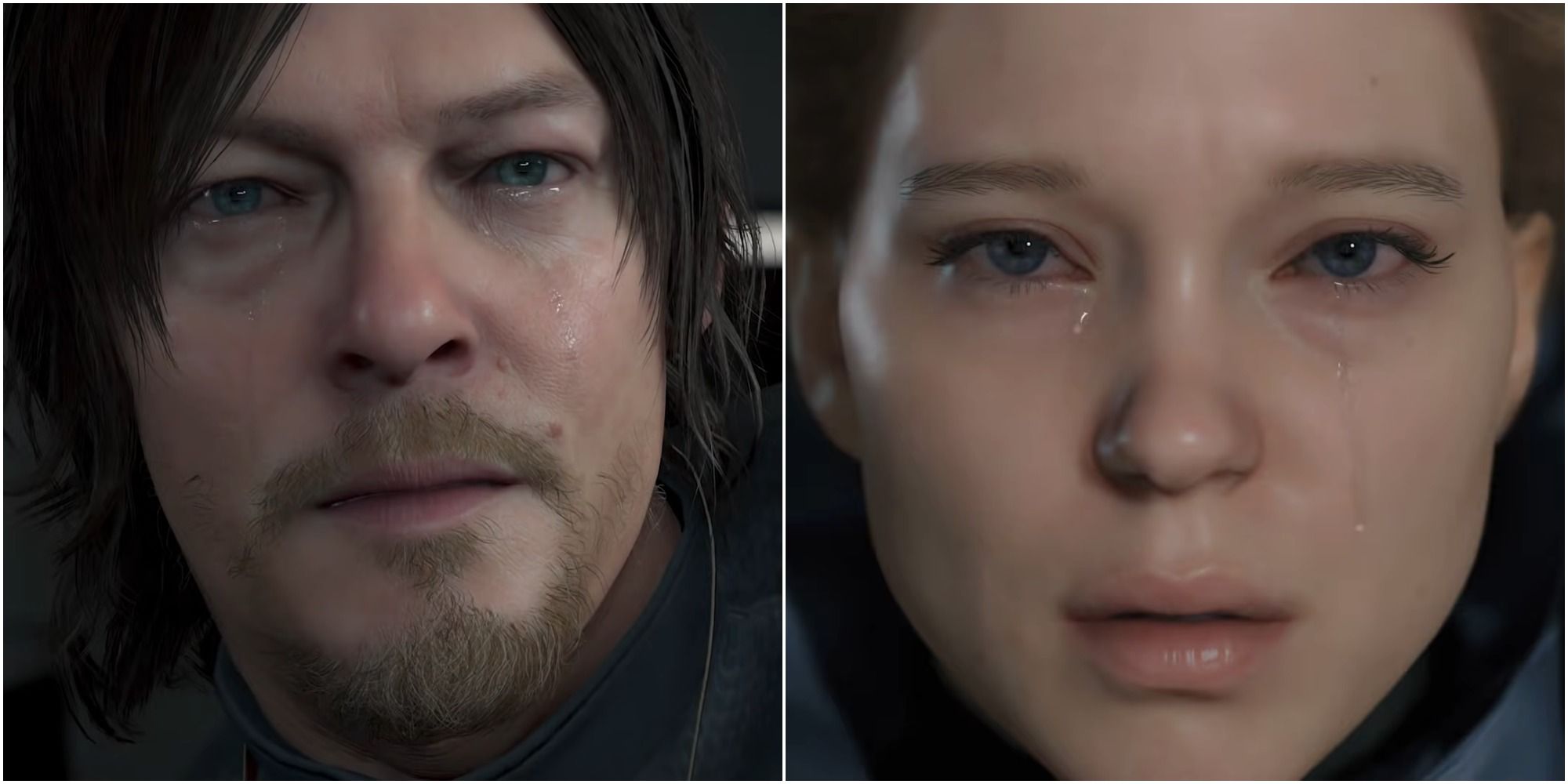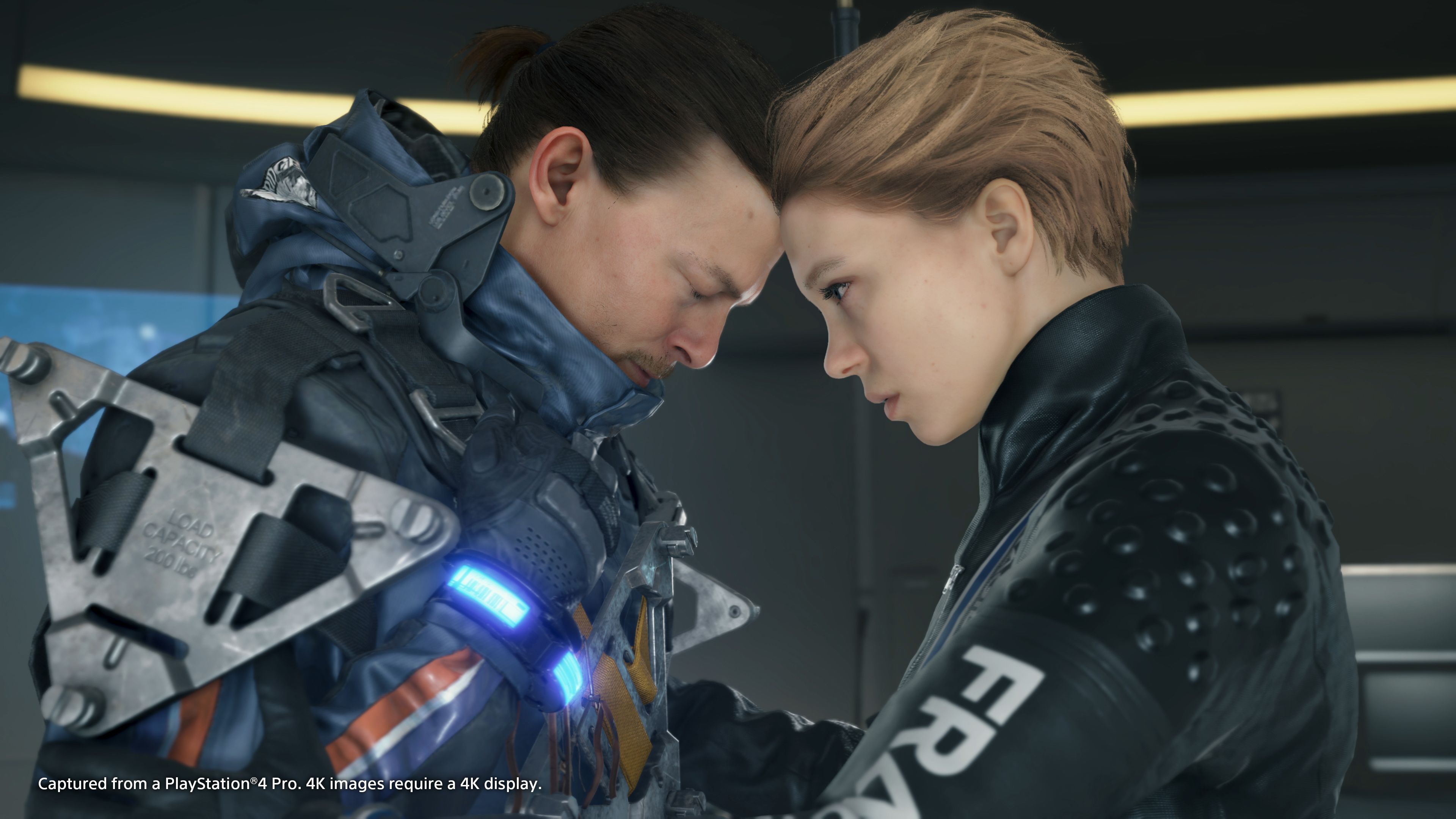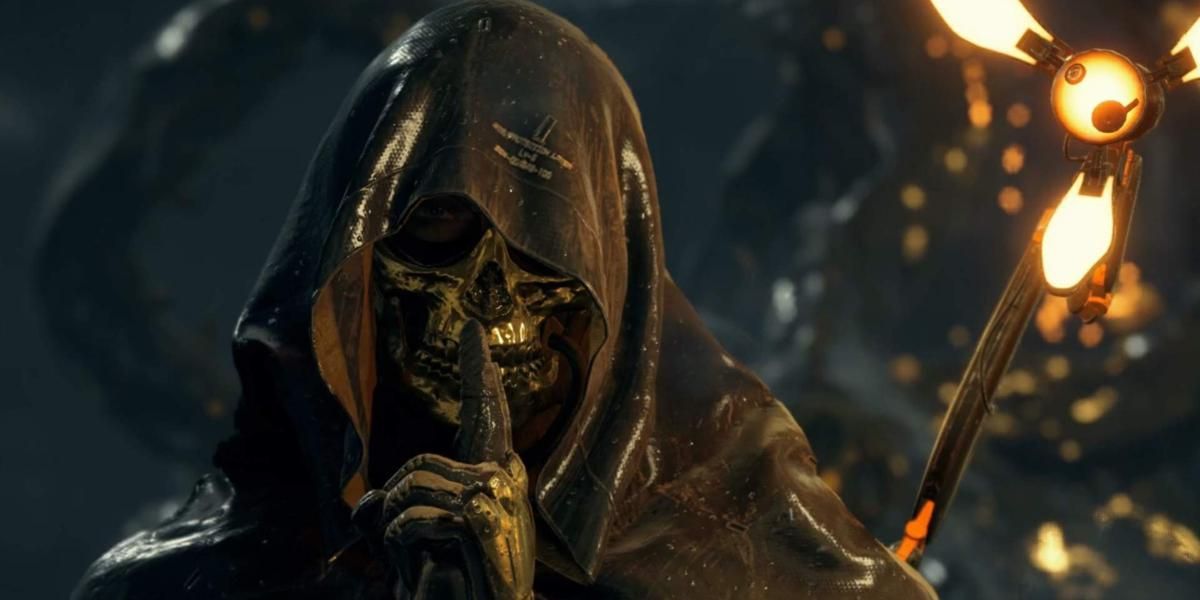The world of Death Stranding is crafted with close attention to detail, depicting the horrors of the living world becoming entangled with an afterlife known only as The Beach: a liminal space that everyone enters after death.
Throughout the game, players will embark on a journey with Sam 'Porter' Bridges, a delivery man tasked with reconnecting the country of America after a series of apocalyptic events related to The Beach have destroyed conventional society and left people disparate and isolated.
Without the full context of the narrative or surrounding world-building, it would be fair to assume that everyone in the game is just really sad. While that's still partially true, there's also a needlessly complicated reason behind all the tears shed in Death Stranding: Chiral Allergies.
What are Chiral Allergies?
Much of the crying in Death Stranding is just a slightly more complex version of the kind of allergies many people experience. Instead of being allergic to cats, dust, or tree pollen, Sam 'Porter' Bridges and many of the primary characters have an allergic response to something called Chiralium.
Chiralium comes in many forms in the Death Stranding universe: it's an ore, an energy source, and also a substance contained within the BTs ('Beached Things') that come from beyond the world of the living.
Essentially, Chiralium is a substance that makes up the afterlife known as The Beach, which prior to the beginning of Death Stranding, has begun to appear in the world of the living in great abundance.
Chiralium is responsible for many of the strange phenomena that can be observed in the world of Death Stranding. From the time-advancing effects of timefall rain to the voidouts triggered by a BT coming into contact with a living being, Chiralium is often connected.
It's likened to a type of anti-matter that causes devastating effects when in contact with living matter. Due to its origins in a realm that doesn't experience the flow of time typically, it is often responsible for time distorting effects, like the aforementioned timefall rain.
Our protagonist Sam' Porter' Bridges, in addition to an array of other characters such as Fragile, Mama and Higgs, all suffer a kind of allergic response to the presence of Chiralium due to a rare condition known as DOOMS. Much like actual allergies, these can manifest in a number of ways. One of the primary ways these allergies manifest is through involuntary tear-shedding, which happens a lot within the game for added dramatic flair.
Although this generally explains why the characters cry so often, it raises a further question: what causes this allergic reaction, and why do only certain people have it?
What Is DOOMS?
Much like many of the sci-fi details of Death Stranding's world, the condition known as DOOMS borders on the magical. Those who have DOOMS are universally known as 'sufferers' of DOOMS. On a basic level, DOOMS can be understood as a condition that gives humans a sensory connection to The Beach and the beings that come from The Beach.
The way in which DOOMS is experienced depends on the severity of the condition. Our protagonist, Sam 'Porter' Bridges, has a moderate form of the condition, which allows them to sense BTs in a way that most people generally can't. This is also what causes Sam's chiral allergies.
Other characters, like Fragile and Higgs, are seen with a more severe version of DOOMS, which also grants them some special abilities, such as Fragile's teleportation abilities and Higgs' ability to control BTs. When these characters use these abilities, their chiral allergies act up because they're using a lot of chiral energy or interacting directly with the chiralium substance - hence the crying.
Who gets DOOMS and why is a more ambiguous issue. There's a genetic factor to DOOMS that is loosely elaborated on in various lore documents that can be found throughout the game, implying that DOOMS can be passed from parents to children. Still, it's clear that it is also randomly dispersed amongst the general populace, as many characters in the game appear to have at least some level of DOOMS without a clear genetic link.
Therefore, the condition DOOMS and the chiral sensitivity it causes is largely responsible for the tears shed in Death Stranding, although the visual similarities between crying caused by emotions and crying caused by these allergies are deliberately invoked by the game's cutscenes as part of its routine bombardment of metaphor and symbolism.



